I wrote about part of final weekâs Actuator on Wednesday in an empty workplace at MassRobotics after assembly with an early-stage startup. Iâm now not in a position to let you know about them simply but, however theyâre doing attention-grabbing paintings and feature one of the vital wilder founding tales of latest antique, so keep tuned for that. Additionally, shoutout to Joyce Sidopoulos for being an overly gracious host to a reporter caught between conferences in Boston for a couple of hours. I would depart a five-star Airbnb ranking if I may.
From MassRobotics, I headed to Cambridge to have a pleasant lengthy chat with Marc Raibert on the Boston Dynamics AI Institute. The newly based institute is headquartered within the new 19-floor Akamai construction, without delay around the side road from Googleâs large construction and a stoneâs throw clear of the MIT lab the place the seeds of all of the Boston Dynamics undertaking had been planted.
Akamai is these days leasing no less than 4 of the constructionâs flooring, owing to a couple actually unlucky timing. The development undertaking was once finished towards the top of 2019, which supposed the gap had a couple of just right months earlier than all hell broke free. In Would possibly 2022, Akamai introduced that it was once providing everlasting make money working from home flexibility to 95% of its 10,000 team of workers. Clearly now not everybody who is authorized to make money working from home does, however within the wake of the pandemic, itâs protected to suppose that many or maximum will.
The entire higher for Raibert and the institute, I guess. With an enormous infusion of money from Boston Dynamics guardian, Hyundai, the group is able to tackle a few of roboticsâ and AIâs hardest issues. However first, expansion. Raibert tells me a large chew of his day is spent interviewing applicants. There are these days one thing like 35 activity listings with extra at the means. After which thereâs an inventory below the name âDonât see what youâre searching for?â with the outline, âIf you don’t see a role posting for a task that fits your revel in/passion, please practice right here. We’re nonetheless occupied with listening to from you!â
Great paintings if you’ll get it, as they are saying.
Lately the gap seems like that of a typical startup, which is usually a supply of frustration for a corporation having a look to actually lean into the laboratory atmosphere. I am getting the sense that the following time Iâm afforded the chance to discuss with, it’ll glance very other â and be much more complete. What it does have these days, then again, is a complete bunch of Spot robots. Thereâs principally a pup day care filled with them off to at least one facet. Raibert notes that the Spots had been bought and now not given to the institute, because it and Boston Dynamics are separate entities, despite the title.
Alongside otherwise are artistsâ conceptions of ways robots would possibly combine into our day-to-day lives sooner or later. Some are acting home duties, others are solving automobiles, whilst others nonetheless are doing extra amusing acrobatic actions. Probably the most programs undergo an uncanny resemblance to Atlas and others are a little bit extra in the market. Raibert says his crew recommended the eventualities and the artist took them in no matter route they noticed are compatible, that means not anything you spot there must be taken as perception into what their robotic initiatives would possibly appear to be, going ahead. The duties theyâre seeking to resolve, alternatively, might be represented within the drawings.
In entrance of those are a number of dusty robots from Raibertâs Leg Lab days that had been ârescuedâ from their longtime properties within the MIT robotic museum. Thatâs since taken me down an actual rabbit hollow, trying out the Leg Lab web page, which hasnât been up to date since 1999 however includes a pre-Hawaiian blouse Raibert smiling subsequent to a robotic and 3 dudes in hazmat fits at the set of 1993âs Emerging Solar.
Additionally, simply scrolling via that listing of scholars and school: Gill Pratt, Jerry Pratt, Joanna Bryson, Hugh Herr, Jonathan Hurst, amongst others. Boy hiya.
Thursday was once TechCrunchâs giant Early Degree tournament on the Hynes Conference Heart. For individuals who couldnât make it, weâve were given some panel write-ups coming over the following week or so. I made certain the TechCrunch+ crew revealed one in every of mine an hour or two in the past, as a result of I sought after to speak about it a little bit right here. The panel wasnât explicitly about robotics, however we lined numerous floor thatâs related right here.
The position of the college post-research is a subject Iâve been considering and writing a good bit about over the last few years. It was once an issue I used to be adamant we dedicate a panel to on the tournament, for the reason that Bostonâs it appears house to a college or two. My protection has tended to manner the topic from the perspective of the colleges themselves, asking merely whether or not theyâre performing as a enough conduit. The solution is more and more sure. To not be too crass about it, however theyâve traditionally left some huge cash at the desk there. Thatâs been a large piece of historic mind drain, as neatly. Take a look at how a lot better CMU and Pittsburgh have got at holding startups native.
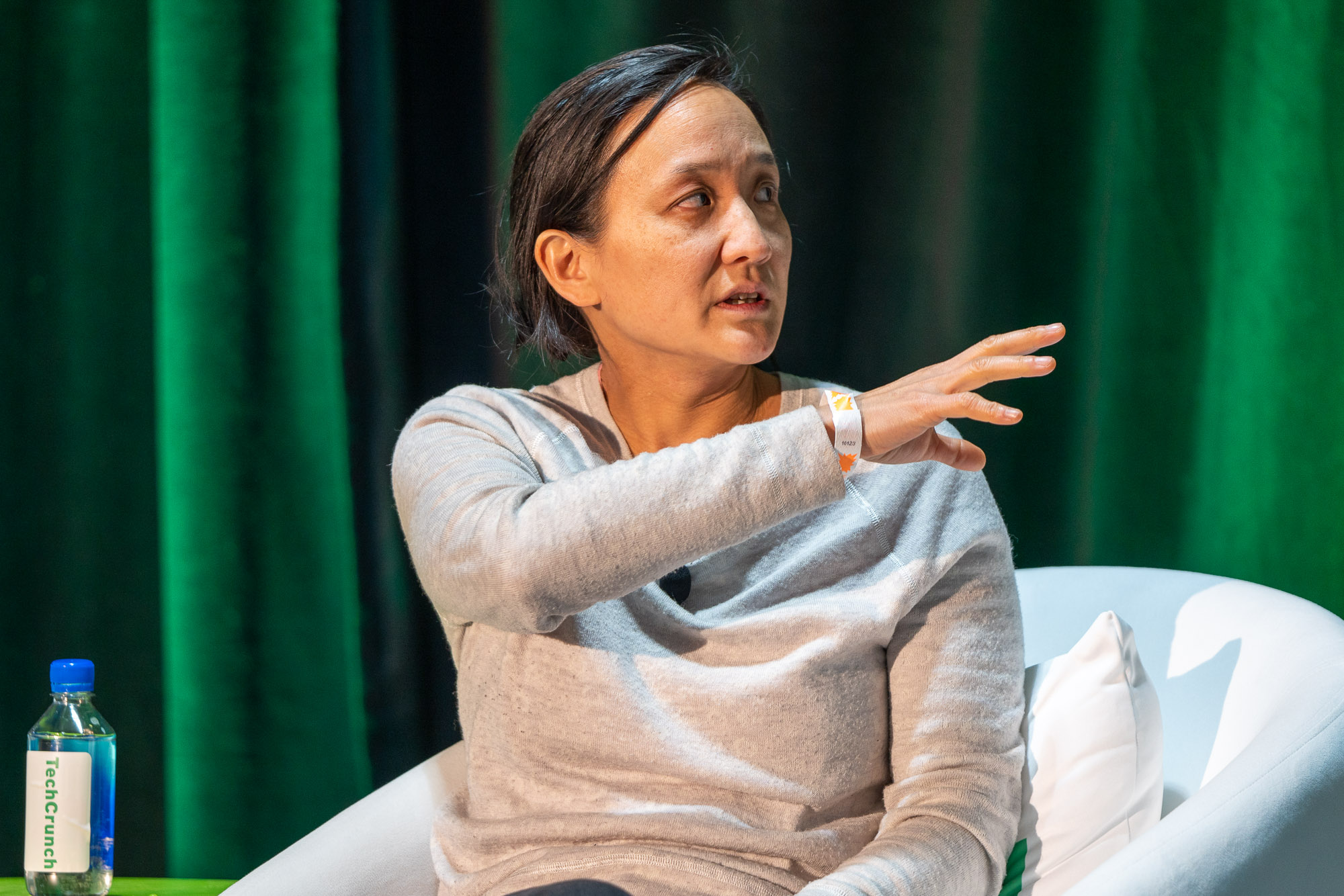
Pae Wu, SOSV & CTO at IndieBio (SOSV) speak about âThe way to Flip Analysis Right into a Tradeâ at TechCrunch Early Degree in Boston on April 20, 2023. Symbol Credit: Haje Kamps / TechCrunch
You may be arduous pressed to seek out somebody with a extra knowledgeable viewpoint at the different facet of the equation than Pae Wu, normal spouse at SOSV and CTO at IndieBio. Just a little of context is most likely helpful right here. Ultimate weekâs tournament essentially featured talks from VCs focused at an target market of early-stage traders. Wu spent a part of her communicate discussing how ârecovered teachersâ may also be effectively built-in right into a founding crew. However now not each professor desires to embody the ârecovered bit.â
I must say that Iâve skilled a variety of eventualities the place professors seem to stroll that line neatly. Simply having a look on the Berkeley Synthetic Intelligence Analysis Lab, youâve were given Ken Goldberg and Pieter Abbeel who’re these days at the founding groups for Ambi Robotics and Covariant, respectively.
âThere are some sectors the place it might probably paintings really well to have individuals of your founding crew who stay in academia,â Wu says. âWe see this at all times in conventional biotech and pharma. However in different kinds of scenarios, it might probably turn into, frankly, a drag at the corporate and problematic for the founders who’re full-time. This can be a very tricky dialog that we have got relatively often with a few of our dedicated teachers: Your stake on this corporate isnât actually aligned along with your time dedication.â
Wu issues to eventualities the place the professor stays in a management position, whilst occurring autopilot for the daily. The problem, she explains, is once they often pop their heads in for tips divorced from the very time- and resource-intensive paintings of operating an organization.
âLecturers actually love to mention, âNeatly, Iâm in reality actually just right at multitasking, and due to this fact I will do that,ââ she explains. âThe vast majority of the time, the educational founder will come out and in and supply their sage knowledge to the full-time founders who’ve dedicated their lives and risked the entirety for this corporate. It begins to create demanding situations in getting the corporate to transport ahead. It creates interpersonal demanding situations as neatly for the founding crew, as a result of you must be a unique roughly saint to mention, âIâm operating 100 hours every week, I donât make any cash, and my complete monetary long run rests at the good fortune of this corporate. And this man helps to keep coming in to inform me some random factor that he learn at the Harvard Trade Assessment.ââ
Wu additionally provides a phrase of warning about college involvement on the early level:
If you wish to be a VC-backed startup, beware the useful college stuff. It could really feel very, very relaxed. They do a super activity of incubating corporations, however I donât know that they do a super activity of increasing corporations. You get numerous âunfastened stuff,â and [people often say] âOh, this can be a handy EIR (schooling, innovation and study) program to paintings with, and this man began 15 corporations earlier than.â However this man began 15 corporations in sectors that experience completely not anything to do with what youâre seeking to do. You may completely be at an advantage discovering any individual who in reality cares about your undertaking, isnât paid by means of the college, however is incentivized to care deeply about your corporate.
You’ll learn (and agree or disagree with) the complete article over on TechCrunch+.
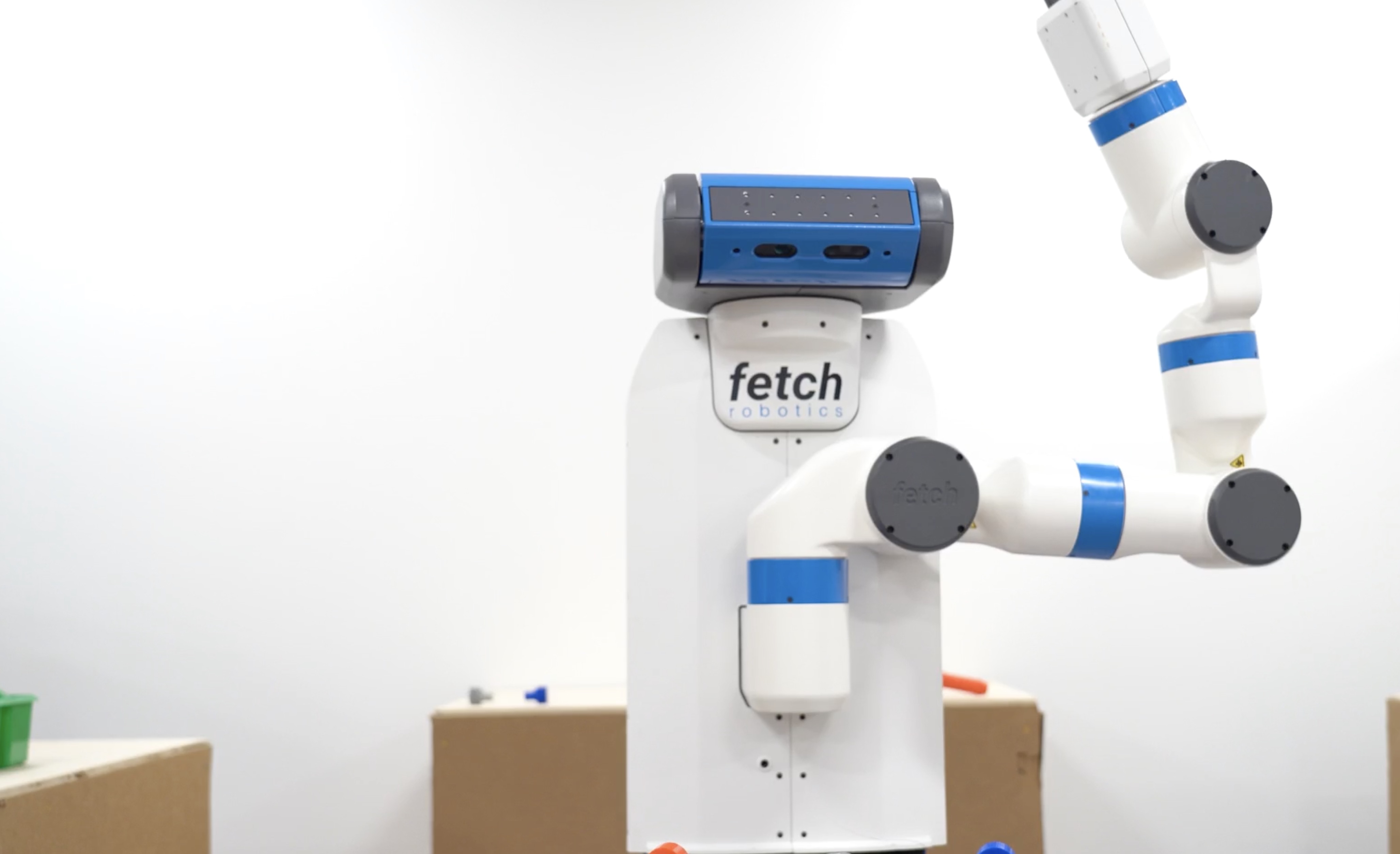
Symbol Credit: Tufts
Friday, coincidentally, grew to become out to be college day for me. I didnât organize to peer a lot study on my final travel most sensible Boston, so I made certain to carve out an afternoon this time. The morning kicked off with a travel to Tufts. The final time I visited the varsity was once in 2017. Human-Robotic Interplay Lab director Matthias Scheutz instructed the video staff and myself about coaching robots to accept as true with.
Scheutz and I sat down once more for a separate â however similar â dialogue. Ahead of taking over the professor position, he gained a joint PhD in cognitive science and laptop science from Indiana College and every other PhD in philosophy from the College of Vienna. Itâs an not likely mixture that informs a lot of the paintings he does. With all the moral and ethical detours throughout our dialog, I couldnât prevent considering that it will have made a just right podcast.
On the middle of the interview is the crewâs efforts to broaden a shareable wisdom set between robots. In a next demo within the within reach lab, one crew member requested a Fetch study robotic to gather a screw caddy, however it doesnât have the considered necessary wisdom. The human coworker then instructs the robotic how you can carry out the method, step-by-step â âExecute whilst finding out,â as they put it. As soon as it positive aspects the data, it runs via round 100 simulations in fast succession to resolve the chance that it’ll carry out the duty as it should be.
Some other crew member asks a close-by Nao robotic whether or not the Fetch is aware of how you can carry out the duties. The 2 robots keep up a correspondence nonverbally. Fetch runs via simulations once more and stocks the guidelines with the Nao, who then communicates it to the human. The demo provides a handy guide a rough shorthand for a way networked robots can go alongside the guidelines they realized via a type of community within the cloud â or a sky internet, if you’ll.
Iâve excerpted one of the vital extra attention-grabbing bits from our dialog beneath.
[Iâm told the above is a Mean Girls reference.]
Dialog with Matthias Scheutz
Distraction vs. overload
If I will discover that you simplyâre distracted, perhaps what I wish to do is get your consideration again to the duty. Thatâs an absolutely other interplay you need from one the place youâre overloaded. I must most likely depart you on my own to complete the item. So, believe a robotic that can’t distinguish between the distraction state, which must be very engaged and get the individual again on job, when put next with the individual being overloaded. If that’s the case, if the robotic doesnât are aware of it, the interplay may well be counterproductive for the crew. If you’ll discover those states, it will be very useful.
Shared psychological fashions
Some of the movies we have now up on our internet web page displays you’ll train this one robotic that doesnât know the way to squat, how you can squat, and the opposite one can right away do it. do it’s to make use of the similar shared psychological style. We willât do that. When you donât know the way to play piano, I will not simply put that to your head. Thatâs additionally a part of the issue with a majority of these deep neural nets which are highly regarded at the moment. You can’t proportion wisdom at that stage. I will not implant to your neural community (this is going for other folks, too) what I’ve been skilled over a few years of training piano. However in case you push the abstraction slightly bit upper, the place you’ve got an outline this is impartial of the way itâs learned within the neural community, then you’ll proportion it.
On multitasking
The recent range is a great instance. The instant [the touch is issued by the brain], chances are you’ll already are aware of itâs on, however itâs perhaps too overdue. Thereâs a degree of abstraction the place I will intrude consciously and cognitively with the sequencing and I will regulate issues. Thereâs a degree of discrete movements the place sequencing happens, additionally robotically. As an example, years in the past, when I used to be at Notre Dame, I drove to campus, however I didnât need to pass to campus. However I used to be enthusiastic about paintings, and so this computerized machine of mine drove me, and the following second I used to be in a carpark. I will communicate to you and get ready meals, no drawback. However it must be rehearsed. If the task isn’t rehearsed, you’llât do it. We’ve a layer within the [robotic] structure that does that computerized sequencing. Thatâs the extent at which we will be able to proportion extra complicated movements.
Your Roomba doesnât know you exist
Thereâs a high quality line, the place you want to have those mechanisms in position, as a result of in a different way hurt will practice in the event that theyâre now not in position. You get this with self sufficient automobiles; you get this in numerous contexts. On the similar time, we donât need to save you all robots, as a result of we need to use them for what theyâre just right for â what theyâre really helpful for. They wish to have extra consciousness of whatâs going down, what theyâre getting used for. Itâs now not an issue with a Roomba as it doesnât even know you exist. They’ve no perception of anything else. However in case you have a look at YouTube, you’ll to find movies of Roomba shoving pets below the sofa. They’ve no consciousness of anyone or any factor within the setting. They donât even know theyâre doing a vacuuming job. Itâs so simple as that. On the similar time, you’ll see how a lot more vastly refined they might should be to be able to in reality cognitively comprehend all of the situations that might occur in an condominium.
When robots say no
Years in the past, we had this video of a robotic announcing no to other folks. In some instances, other folks will not be conscious about the state the robotic is in, give it an instruction, and if the robotic performed that instruction, it will be unhealthy for the robotic or an individual. So the robotic wishes to mention no. However it might probablyât simply say no and not anything else. It must let you know why now not. If the robotic simply doesnât do it, thatâs now not just right. You receivedât accept as true with that robotic to do one thing once more.
Editorial interjection right here. The ânoâ video brought about a little bit of a stir for its perceived violation of Asimovâs 2d regulation, âA robotic should obey the orders given it by means of human beings aside from the place such orders would battle with the First Regulation.â Clearly thereâs a clause baked into that 2d regulation that claims the robotic must now not obey an order if doing so will injure a human (first regulation).
However Scheutz doesnât prevent there. He paints a state of affairs wherein a robotic is wearing a field because it was once instructed to do. a unique human tells the similar robotic to open a door, however doing so would motive it to drop â and harm â the field. On this case, the ânoâ isnât about protective a human, however it’s about following orders. Straight away following the second one order successfully negates its skill to hold out the primary.
Itâs right here, then, that the robotic is needed to mention, âNo, however donât fear, I were given you as soon as I am getting this field the place it wishes to head.â
Dialog with Pulkit Agrawal
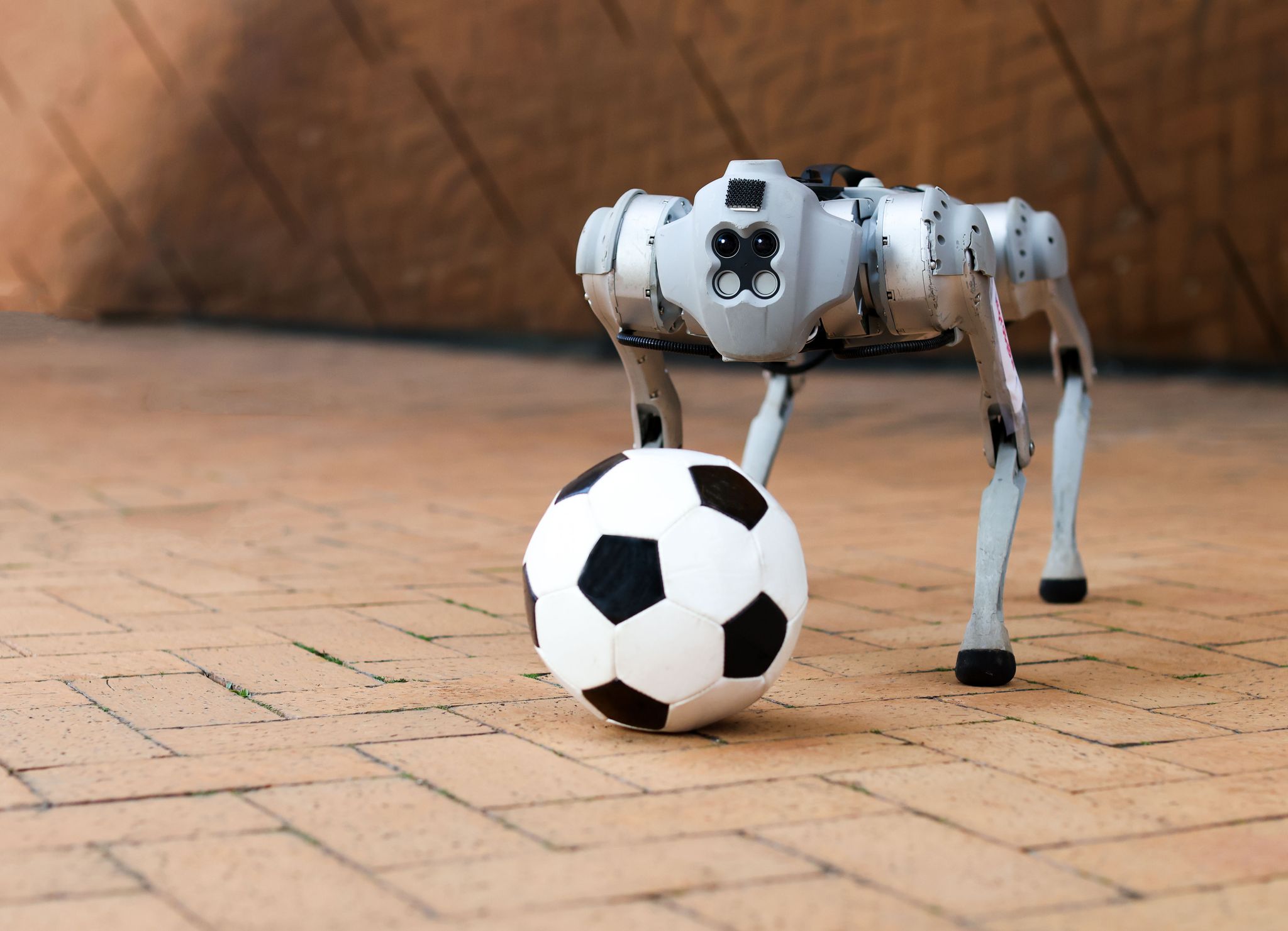
Symbol Credit: MIT CSAIL
After our chat, I head again to Cambridge for my first time again at MIT CSAIL for the reason that pandemic began. Because of a last-minute exchange of plans, I wasnât ready to reconnect with Daniela Rus, sadly. I did, then again, get a possibility to after all talk to Electric Engineering and Laptop Science (EECS) assistant professor Pulkit Agrawal. Because it took place, I had lately written about his crewâs paintings to show a quadruped to play football on tough surfaces like sand and dust.
After I arrived, I commented at the Intel RealSense field in entrance of me. Iâve been searching for any explanation why to talk about the transfer clear of LiDAR Iâve been seeing amongst roboticists of overdue, and this was once a super in. Once more, some highlights beneath.
On why extra roboticists are transferring clear of LiDAR
Presently, we don’t seem to be coping with hindrances. If [the ball] does pass clear of the robotic, it does wish to handle it. However even coping with hindrances, you’ll do it with RGB. take into accounts that is that folks sought after intensity as a result of they may write systems by means of hand of how you can transfer the robotic given a intensity recording. But when we’re going to transfer towards data-driven robotics, the place Iâm now not writing my very own program, however computer systems are writing it, it doesnât subject whether or not I’ve intensity or RGB. The one factor that issues is how a lot records I’ve.
On grippers
Why do other folks use suction cups? As a result of theyâre like 5 dollars. Itâs damaged, you substitute it. Even to get them to make use of a two-finger gripper, itâs $100. Even Amazon doesnât need to put extra sensors. Think you pass to an organization and say, âI need to upload this sensor, as a result of it would toughen efficiency.â Theyâll ask how a lot the sensor goes to price and multiply it by means of the amount of what number of robots they’ve.
On ânormal goalâ robots
Think you’ve got one goal, say, lifting packing containers and striking them at the conveyer belt, after which there was once pick out and position after which loading them at the truck. It is advisable to have built 3 other robots which are extra environment friendly at 3 other duties. However you even have other prices related to keeping up that other robotic and integrating the ones other robots as a part of your pipeline. But when I had the similar robotic that may do those various things, perhaps it prices much less to handle them, however perhaps theyâre much less performant. It comes down to these calculations.
After I made connection with the Mini Cheetah robots the crew has been operating with, Agrawal commented, âIt in reality seems flipping is way more straightforward than strolling.â
âDiscuss for your self,â I countered.
He added, âWhat’s intuitive for people is in reality counterintuitive for machines. As an example, taking part in chess or taking part in pass, machines can beat us. However they may be able toât open doorways. Thatâs Moravecâs paradox.â
TC+ Investor Survey

Symbol Credit: Bryce Durbin/TechCrunch
As promised, every other query from our fresh TechCrunch+ investor survey.
Following the lead of robotic vacuums, how lengthy will it take earlier than further house robotic classes pass really mainstream?
Kelly Chen, DCVC: Medium-term, at absolute best. Alphabetâs folding of On a regular basis Robots is going to turn how even massive assets can’t make house carrier robots viable as of late. The house is a extremely unstructured setting. Going past the somewhat easy exceptions that present vacuum robots wish to be informed, the remainder of the house is a lot more tough. Further duties are in 3-D, which might imply extra sensors, actuators, manipulation, other grippers, drive keep an eye on, and far much less predictability. We don’t seem to be there but in making this dependable and economical.
Helen Greiner, Cybernetix Ventures: 5 years for garden mowers in the United States, in keeping with vision-based navigation (mixed with GPS) popping out. No setup wires and higher UIs will force call for. The community impact (neighbors copying neighbors) will force call for after preliminary adoption. 13 years for a humanoid helper, in keeping with Agility and X1 value decreased and smarter.
Paul Willard, Grep: It has already began. Labrador robots assist mobility-challenged other people fetch and elevate issues round the home. So medicine is at all times to hand and brought on time, grocery supply from the entrance door may also be carried to the refrigerator and pantry to be put away, and dinner may also be carried from the range to the eating desk whilst the buyer has their arms complete most likely with a walker, a cane or a wheelchair. There might be extra because the {hardware} that makes up the robots will get more economical and extra succesful, concurrently.
Cyril Ebersweiler, SOSV: Maximum robotics corporations eyeing B2C have moved to B2B through the years. The time, scale and quantities of cash required to release this kind of emblem at the moment isnât precisely what VCs are searching for.
Information
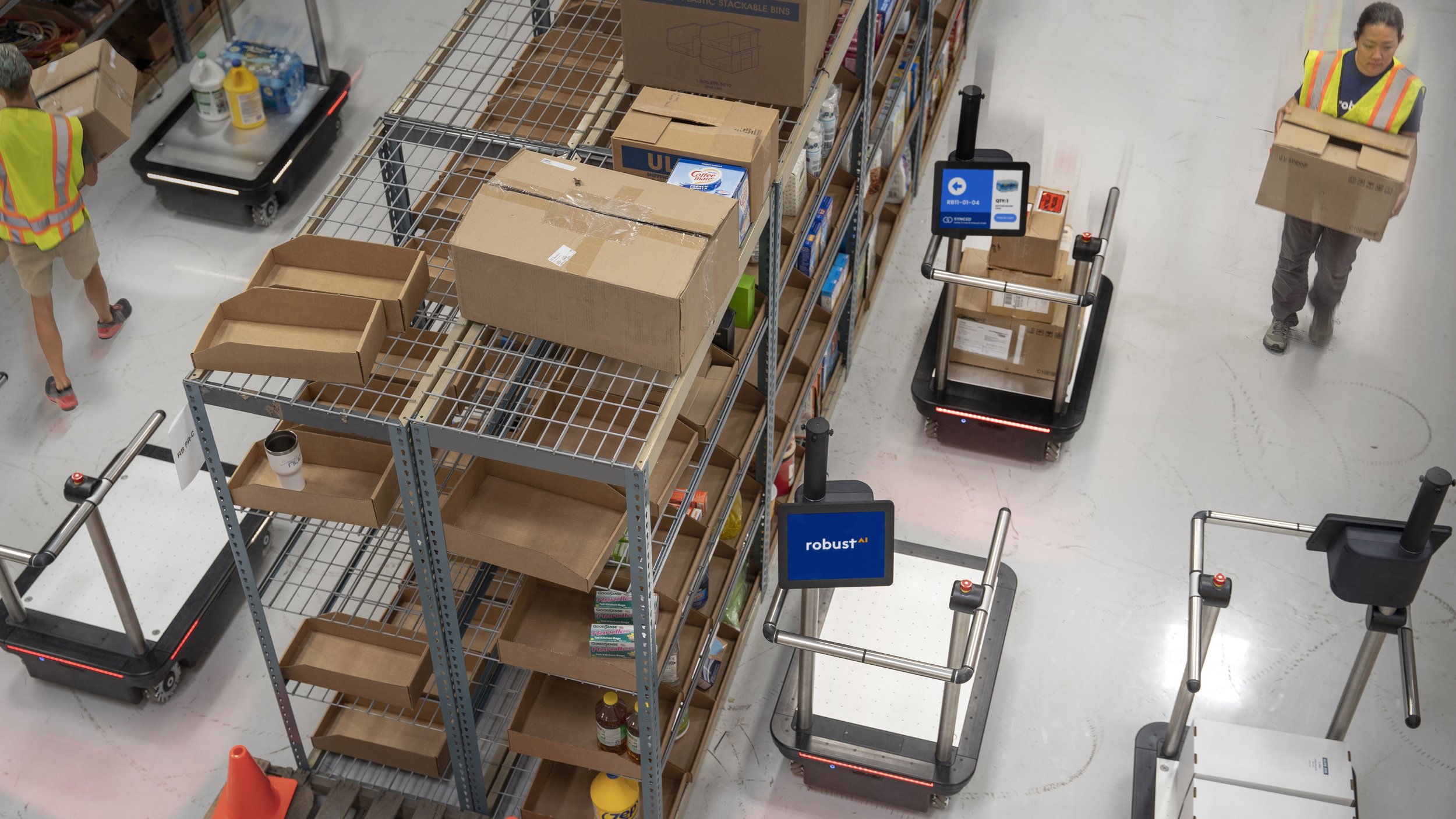
Symbol Credit: Powerful.AI
Had a possibility to meet up with Rodney Brooks once more (we need to prevent assembly like this). This time he was once joined by means of his Powerful.AI co-founder and CEO, Anthony Jules. The startupâs paintings was once shrouded in thriller for a while, resulting in this amusing headline from IEEE. Weâve were given a a lot better maintain on what the crew does now: It makes a robot cart and application control machine for the warehouse.
Brooks was once understandably a little bit hesitant to leap again into the {hardware} recreation. Jules instructed me:
We began off seeking to be a software-only corporate. We began having a look on the area and made up our minds there was once a superb opportunity to actually create one thing that was once transformative for other folks. After we were given desirous about it, we did very same old product paintings to grasp what the ache issues are and what it was once that will actually assist other folks on this area. We had a beautiful transparent imaginative and prescient of what could be treasured. There was once at some point I actually stated to Rod, âI believe I’ve a good suggestion for an organization, however youâre going to hate it, as it method we would possibly must construct {hardware}.ââ
Overdue final week, Powerful introduced a $20 million Sequence A-1, led by means of Top Movers Lab and that includes Long term Ventures, Power Have an effect on Companions, JAZZ Ventures and Playground International. That follows a $15 million Sequence A introduced again in overdue 2020.
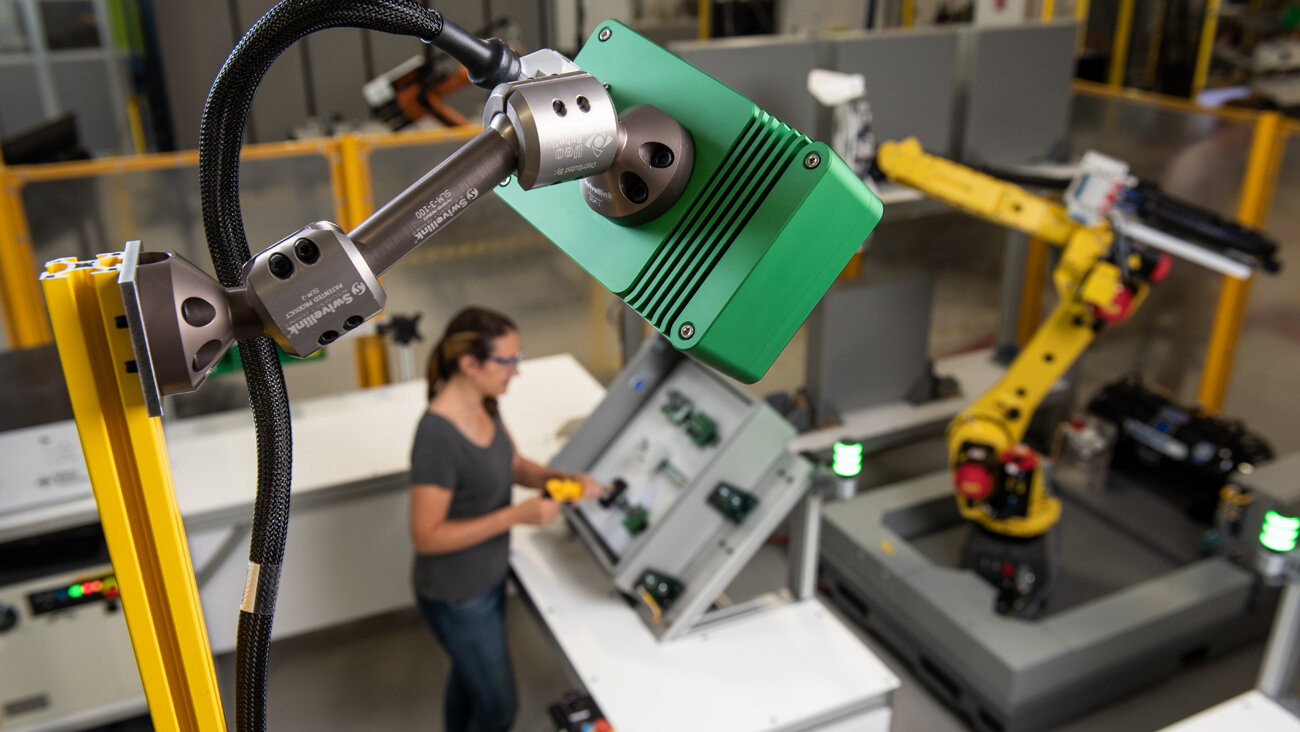
A Veo Robotics setup in a human-robot co-working setting. Symbol Credit: Veo Robotics
This week, Massachusetts-based Veo Robotics introduced that it has closed a $29 million Sequence B. That incorporates $15 million from final 12 months and $14 million from this 12 months. Safar Companions and Yamaha Motor Ventures participated, however probably the most notable again is Amazon via its $1 billion Business Innovation Fund.
Itâs simple to view those investments as a type of trial run for doable acquisitions, even though the corporate has in large part denied that it makes use of the cash as an on-boarding procedure. That stated, it’s no doubt a vote of self belief and, on the very least, most likely a sign that the corporate will start piloting this generation in its personal workspaces â assuming it hasnât already.
âThe most recent era of clever robot programs paintings with other folks, now not one by one from them,â says co-founder and CTO Clara Vu. âUnlocking this doable calls for a brand new era of protection programs â that is Veoâs undertaking, and weâre very excited to be taking this subsequent step.â
Veo develops a application protection layer for commercial robots, letting them function along human co-workers outdoor of the cages observed on many flooring.

Symbol Credit: College of Tokyo
All of us consider the Digit predecessor Cassie, proper? OSUâs robotic took sturdy cues from ostriches for its bipedal locomotion. RobOstrich (robotic ostrich. Sluggish clap) is extra concerned about the higher part of the arenaâs biggest flightless chicken.
âFrom a robotics viewpoint, it’s tough to keep an eye on this kind of construction,â the College of Tokyoâs Kazashi Nakano instructed IEEE. âWe centered at the ostrich neck on account of the potential of finding one thing new.â
The machine options 17 3-D published vertebrae, with piano cord serving as muscle tissue. The machine is in reality an extended robot manipulator that provides a versatile compliance that different programs lack.
Letâs perform a little extra robotic activity listings subsequent week. Fill out this kind to have your corporate indexed.

Symbol Credit: Bryce Durbin / TechCrunch
Take your head out of the sand already. Subscribe to Actuator.Â